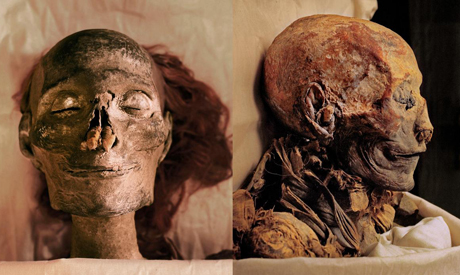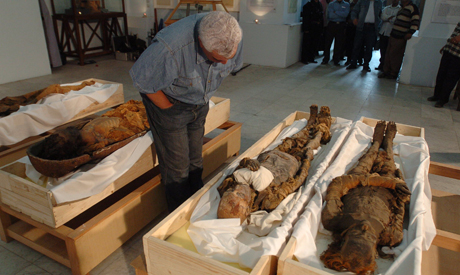Ancient Egyptian kings and queens have magic for all of us, and this includes queen Hatshepsut who ruled as a Pharaoh during the golden age of ancient Egyptian history when Egypt ruled the east.
After a few years as regent, Hatshepsut ascended to the throne beside her nephew Thuthmosis III and became a full co-ruler. The concept of divine kingship in ancient Egypt has its roots in religious myth, which defined the roles of both kings and queens. In ancient Egypt, the king was always associated with male images, such as the bull and the falcon, while the queen was identified with the vulture goddess Nekhbet. Thus, a woman, according to religious dogma, could not ordinarily take the office of Pharaoh.
However, the king could not rule alone, but had to have a woman as his counterpart. Without this, the kingship could not function; thus, queenship was a counterpart and balance to kingship, with its own well-defined mythical and ritual roles. The two offices were intertwined and mutually dependent, but they were also fundamentally different and not interchangeable.

Scientists conducting DNA tests
Hatshepsut counted the years of her reign from Thuthmosis III’s accession. Although he is occasionally depicted as co-regent, as on the blocks of the Red Chapel at the Karnak Temple, she was always the dominant partner. After she became the Pharaoh, she ruled for about 20 years and then disappears from the historical record.
The story of Hatshepsut is wonderful and really took hold of me recently. I made a visit to the Valley of the Kings, specifically KV20, the tomb of Hatshepsut, as well as KV60, in order to search for the mummy of this great ancient Egyptian queen.
The KV20 tomb was known before British archaeologist Howard Carter began his work in the Valley of the Kings in the early 20th century. A French expedition under the Italian Egyptologist Belzoni recorded the tomb in 1824. Later, Egyptologist James Burnton re-cleared it and reached the stairs or the second step on the tomb. After this, Carter began working in the tomb.
It is a double tomb and was made for queen Hatshepsut and her father Thuthmosis I. Based on vessels bearing the name of Thuthmosis I, Carter attributed KV20 to this king and suggested that Hatshepsut, whose sarcophagus was found there as well, was buried there later. However, it is more likely that it was built by Hatshepsut herself and that she later brought her father’s body to the tomb to accompany her into the afterlife. A tomb carved for Hatshepsut while she was queen also lies in the cliffs at Wadi Sikket Taqet Al-Zaid.
In 1902, Carter and fellow Egyptologist Theodore Davies discovered a sarcophagus made of sandstone inscribed for Hatshepsut as a Pharaoh in the burial chamber. This is now in the Egyptian Museum in Cairo. A second sarcophagus, also found in the burial chamber, belongs to her father, Thuthmosis I. This was either transferred to KV20 from his original tomb, or ordered by Hatshepsut so that she could move her father’s body into it. It is now in the Museum of Fine Arts in Boston in the US.
The mummy of Thuthmosis I was later transferred by Thuthmosis III and reburied in a new tomb, KV38. During the excavation of KV20, Carter and Davis also discovered a box of canopic jars belonging to the female Pharaoh. The tomb was not inscribed, but 15 blocks of limestone were found on which had been painted, in red and black, scenes and text from the Book of the Amduat, or the “Book of What is in the Underworld”. Ushabti figurines were also found with the features of Hatshepsut, and stone vessels were discovered inscribed with the names of Ahmes-Nefertari, Thuthmosis I, Ahmose, and Hatshepsut.
Wooden fragments of a head and feet from a large statue were discovered in the tunnel that preceded the burial chamber.

Hatshepsut (right) and her nurse
DISCOVERIES: When I came to visit the tomb of Hatshepsut, I decided to open the KV60 tomb as well.
This tomb was first discovered by Carter in 1903. It lies in front of the entrance of KV19, the tomb of Mentuherkhepshesef, and is not far from KV20. Inside this tomb, Carter found mummified geese and other meat offerings and the bodies of two elderly women, one in a coffin labeled with the name and title of great royal nurse, named Sitre In, and the other lying unconfined on the floor. He removed the geese and closed the tomb.
The tomb was subsequently reopened in 1906 by Egyptologist Edward R Ayrton and Davis, and the two men moved the coffin and the mummy it contained to the Egyptian Museum in Cairo in 1908. According to Forbes, the extraction of Sitre In from this tomb by Ayrton is speculative, as there is no previous record of her removal. The mummy was registered at the museum in 1916 as TR 24.12.16.1, with a note that it was recognised by Carter as having been found by him near Mentuherkhepshesef in 1903 and brought away later by Ayrton.
Since that time, the mummy and its coffin have remained, neglected, in the attic of the museum, and until now there have been no photographs available of either. The inscription on the coffin has led scholars to identify the coffin and its body as the nurse of Hatshepsut, Sitre In, known from a sandstone statue found at Deir Al-Bahari near Luxor (JE 56264) as the wet nurse of Hatshepsut.
The remaining mummy in the tomb is in the so-called “queen’s pose” with one arm placed diagonally across her breast. After Ayrton and Davis’s expedition, the tomb was re-sealed with the denuded corpse still in situ. The tomb was later opened for a third time for full and official clearance by US Egyptologist Donald Ryan of the Pacific Lutheran University Valley of the Kings Project. The remaining mummy was photographed, examined, and a box made in which to store it more safely.
I went to see KV60 with Egyptologist Salima Ikram in order to examine the mummy for a television documentary. With some difficulty, we were able to enter the burial chamber. This was left unfinished and was never decorated. It might have been a perfect place to hide mummies in the Pharaonic period. There have been three royal caches found in the Valley of the Kings: KV35 in 1898; KV55 in 1907; and the tomb of Horemheb in 1908. But neither these, nor the royal mummy cache at Deir Al-Bahari, contained a mummy identified in any way as Hatshepsut.

Mummies of queens who were subjected to DNA tests
Some scholars believe that Hatshepsut was buried in the tomb at Wadi Sikket Taqet Al-Zaid, which was prepared for her while she was queen. Egyptologist Elizabeth Thomas has suggested that the mummy left behind in KV60 is Hatshepsut. Ryan has also proposed (following upon Thomas’s hypothesis) that the mummy left in KV60 might be the missing corpse of Hatshepsut. However, I do not believe that this mummy is Hatshepsut. She has a very large, fat body with huge pendulous breasts, and the position of her arm is not convincing evidence of royalty.
I appointed several curators at the Egyptian Museum to look for the second mummy, the one moved by Ayrton in 1908. They discovered it on the third floor of the museum and examined it on my behalf. The badly damaged coffin is typical of the 18th Dynasty. Among the remaining inscriptions is wr Sdt nfrw nswt In, or great royal nurse. The mummy inside is about 1.5 metres tall, but the coffin is 2.13 metres long, suggesting that it was not originally intended for this mummy. The obese mummy still in the tomb is significantly taller and would fit much better in the coffin.
The mummy in the Egyptian Museum has her right hand down by her side and her left hand across her abdomen with the hand closed as if it was originally holding something. She was well mummified, in fine linen, with the fingers wrapped individually. The toes were evidently wrapped together; this wrapping has been torn away, as if the robbers were looking for gold. The woman was eviscerated through a U-shaped incision in the abdomen. She has long curly hair remaining on her head. I think the face is quite royal, and I believe that anyone who sees it will have the same reaction. There is also a mass of linen at the bottom of the coffin, but this is not of the same quality.

Hatshepsut’s mummy
I suggest that in the Third Intermediate Period, during the 21st or 22nd Dynasties, ancient Egyptian priests moved the mummy of Hatshepsut to KV60, which possibly was cut in the 18th Dynasty but never used, or perhaps was originally intended for Sitre In. The priests moved the mummy of Hatshepsut from KV20 to KV60 for reasons of security, I believe, as they had done before for the occupants of many tombs in the Valley. The mummy of Hatshepsut could have been moved to the coffin of her wet nurse for security, or as a mark of respect.
The body of the mummy now in KV60 with its huge breasts may be the wet nurse and the original occupant of the coffin at the Egyptian Museum in Cairo. Therefore, the mummy on the third floor of the Egyptian Museum could be the mummy of Hatshepsut. Plans are being made to move the mummy from KV60 to the Egyptian Museum, and a special exhibition of the two mummies is being organised.
*A version of this article appears in print in the 10 December, 2020 edition of Al-Ahram Weekly.
Short link: